What to say about Cuba?! Ever since we returned I thought, how on earth can I describe it? We are glad we went, we had fun experiences and good memories, but the sensation of something difficult to swallow remained for a while. The feeling has faded with time, but it was very bewildering to feel like that. When we saw the difficult situations Cubans face every day, it troubled me to come to terms with my country’s part in their hardships.
All my life I’ve heard that Castro is a horrible dictator and that Cubans hate him and his evil government. For Okan’s part, not being raised in America, he had the impression of Castro as one of the few leaders that would not bow down to American interests. When you learn a more little history, from Cubans living in Cuba, you realize just how much grey there is around the American telling of Cuba’s history. Castro appears to be equally loved and hated…just depends on whether you are a Cuban that benefitted or was hurt by the Cuban revolution.
Only after Castro decided he was more aligned with communism, did the US go from supporting him, to deciding they needed to oust him. Castro survived over 600 assignation attempts! The CIA designed exploding cigars and seashells, along with some other pretty crazy plots. But eventually the USA hit Cuba where it really hurt, by cutting off all trade and freezing Cuban assets in the States. The impact of this is still seen today, as Cuba looks like a 1950’s time capsule. Before Castro almost 80% of Cuba’s commercial transactions were with the USA. Investors from the United States owned 50% of the public railway system and over 90% of the telephone and power industries. Americans owned the largest chain of supermarkets, several large retail stores, and most major tourist facilities. 25% of all bank deposits were held by American banks. Cuba was indeed America’s playground, not just for tourist but financially.
Touring the museum of the revolution made clear the problems of Bastista’s corrupt government (which was supported financially by the USA…and the US Mafia) and the issues that Castro was trying to solve in the revolution. Castro, an affluent and educated lawyer, initially tried to oust Bastista through the Cuban court system, but that obviously failed. Castro’s main objective was to take the destiny of Cuba out of the hands of outside interests, and return it to the people of Cuba, and provide equality for the poor and marginalized Cubans, especially the Afro-Cubans. Prior to the revolution, blacks were not even allowed on the beaches! The other main objectives were to bring education and health services to all Cubans.
Unfortunately, becoming an enemy of your greatest trading and investment partner, really does impact your economy. Especially when the USA ensured that none of her allies would trade with Cuba either. Russia filled some of the void, but fell woefully short of providing products and services that were once readily available. The lack of trade, in addition to the state micromanagement of just about everything, impacts all Cubans…and by extension, all tourists in Cuba!
Let’s take for instance, trying to buy groceries. Looking in food cases designed for the 50’s diner to display baked goods, we found mostly …. pasta. Not even assortments of pasta…just one brand, one kind, lined up across the whole display. That’s it folks…that’s what’s for dinner! We initially thought we save money on this trip by cooking our own meals…we realized that was never going to happen here. So we adjusted our budget and headed out to eat.
Next, let’s talk personal items like Sun Cream. Since we did all carry on luggage to Cuba, we left the huge tube of Coppertone in the camper lest it get tossed at the airport. No problem right, just buy it when we arrive! Wrong! We were even in a Mall with hundreds of stores, and found no trace of sun cream. We finally found the only store in Havana selling it, the one in the lobby of a finely preserved, extremely expensive, luxury tourist hotel (a place we would have never ventured had we not been told to go there). There it was, locked up behind a display case in this tiny boutique store. We had to wait in line to even get in the store, as the store can only have 5 people inside at a time.
In our quest for affordable food options, we tried the hamburger stands that were everywhere. It’s kind of a mix of beef and ham, and well…kinda tasted pretty crappy. You also have to make sure you have exact change, as there are two currencies in Cuba…the one for locals and one for tourists. You will get the local currency for change. The small shops will only do a 1-to-1 exchange, but the local currency is lesser in value. You can very quickly end up with pockets of near useless change.
The popcorn and ice cream stands were much better and we made regular stops at these. Needless to say our diet here wasn’t so great! After seeing the food situation, we also opted for our hosts to provide our breakfast every morning. Scrambled eggs, toast, fruit, and some cold cuts, with mango juice. We were relieved to not have to search for our morning meal to start the day.
https://flic.kr/p/28bEHnV
Our hosts were running what is known as a “Casa Particular”. They all must show the little symbol by the doorway, letting you know the place is approved by the government. If not, a Cuban running an illegal operation can get into serious trouble. Those approved, can open their home for people to stay, much like a bed and breakfast, but usually in what looks like an apartment building. This is new for Cubans, a chance to run a private business, and Cubans are excited to venture into this new area. We actually booked on AirBnB! Although Castro had once desired to put the destiny of Cuba in the hands of the people, it really ended up in the hands of the state which controls most everything. But small changes like this are beginning to be seen.
One of the good things that came out of the thawing relations between Cuba and the USA under President Obama, is that Americans could give their tourist dollars directly to these new Cuban entrepreneurs, and not be forced to pay the tourist companies and large hotel chains. According to our hosts, the influx of Americans entering Cuba had started helping locals because the the services and products around the tourist trade were also growing. Of course, Trump shut the door again on that policy stating it hurt the local Cubans. Ah, here we go again, what Trump doesn’t know, ends up hurting others. Poverty and financial disparity still definitely exist in Cuba, but helping Cuba grow it’s tourist industry again helps all Cubans.
After two days of walking everywhere with Indigo in a stroller, our feet were sore and we opted for the hop-on/hop-off bus tour. By this time we’d seen all the grittiness of Havana by taking too many wrong turns, and it went pass the aquarium…we figured that would be a nice treat for Indigo.
Unfortunately, the aquarium was not a good hop-off! It saddened us to no end to see this place, completely falling apart, with just a handful of fish and animals in poorly kept displays. Indigo only noticed the good, the turtles the fish, the trampoline in the corner, and …. the cats. Although they were not officially part of the aquarium, there were enough cats hanging about to make us question whether or not they actually were part of the facility.
We jumped back on the bus, after a burger at a 50’s diner, and headed back to the downtown area. During this part of the ride, we discovered that the tour guide’s family was one of the recipients of Castro’s redistribution of wealth in Cuba. Her grandmother was the housecleaner for a home once owned a wealthy Cuban who fled to Florida after the revolution. She was gifted the home in which she worked her whole life, and this allowed their family (along with the education they were now permitted to receive) to climb out of poverty. This redistribution of land and wealth helped many, but also ruined many. Many affluent Cubans who were aligned with Bastista, fled Castro’s Cuba lest they be persecuted for corruption. Many lost their lands and wealth, along with the Mafia, in the process. The infamous mob leader Meyer Lanksey, was said to have visited his casinos and collected a million dollars, just a fraction of his wealth, before fleeing. He never again regained any of the assets he left behind in Cuba.
Overall, we definitely recommend the bus tour if in Havana. We had a nice sunny day, saw lots of the surrounding area, learned a lot from the tour guides, and it’s apparently a good place for little ones to nap.
Even though many in poverty were helped immediately after the revolution, the economy in Cuba is still struggling and there are still lots of poor living conditions. We do not know if this is partly the plight of not being able to get the materials to maintain some of these amazing old colonial buildings, or the poverty levels of those living in the buildings, perhaps a combination of both. We walked down streets where pristine government buildings, or high-end luxury tourist landmarks were interspersed with decaying colonial mansions, which people called home. Some buildings looked gutted, with plants growing out of the walls, but we would see the furniture and laundry of those that called these places home.
Although we were learning a lot about Cuba, we had also done our research about some things in advance. We felt mighty proud of ourselves for bringing enough cash, when we saw a desperate looking American tourist searching in vain for an ATM machine that would accept his card. We might have been unprepared for empty grocery stores, but we knew there were no ATMs that would work for our North American accounts! We did have to go to the bank one day to exchange more US dollars, and that took hours of waiting in a bank line that wrapped around the corner of the building. So be sure to exchange more at the airport when you arrive to avoid that one.
Another no-no, is thinking you can easily rent a car and drive around Cuba. There are 3 companies that purport to rent cars, but they are actually all the same government run company behind the scenes. Usually they have no cars, or you might need to wait a day or two to see if one becomes available. That online reservation you have…it means basically nothing. Most people give up while waiting at the airport and take a taxi to their lodgings. Should you be able to actually get your hands on a car, better check the tires, and not drive too far. They are known to break down, get flats, and fuel stations that actually have fuel seemed to be either well hidden or non-existent.
And why would you want to rent your own car, when you can get driven around in taxi cabs that make you feel you are living on the set of “Happy Days.” Okan thinks our trip to Cuba was all worth it just to see the classic cars. They were everywhere. If and when the trading between Cuba and the world normalizes, the wealth of Cuba would be raised in folds just because of these old cars.
So, where do all those old classic cars everywhere get gasoline you might wonder. Those old classic cars are actually no longer classic, and have had diesel engines dropped in them. You can tell pretty quickly once you hear the engine and see black exhaust. The taxi drivers get their fuel from the black market. The black market diesel is why the taxi rates are actually reasonable. To get around, your best bet is to simply hire a driver to take you where you want to go, or hop on the many collectivos (small vans or large jeeps that wait for a full car, then drive to a destination for a fixed rate). This turned out to be quite easy and the way we found ourselves to the beach.
The beach was interesting…extremely packed with people, with competing loud music. We rented a beach umbrella and took in the young Cuban crowds enjoying the beach, and got in the water several times ourselves. The water is beautiful, and although the partying is taken right out into the water on floats and boats, we found some pockets of open space to swim. We had some greasy but yummy food from a local stand, before finding our ride back to town. We shared a collectivo with a group of other tourists on the way back. Our new friends must have been better negotiators, because they were paying $10 for the 5 of them, and we were paying $10 for the 3 of us. They wanted to argue with the driver to get us a better deal, but we said no thanks and let it slide.
I must say that not being able to find groceries in Havana turned out to be a good thing. Despite catching one waiter at a cafe trying to inflate our bill (we did stand our ground on this one, and had him correct it) we ended up finding some great restaurants and had some really nice evenings out. At our first restaurant, Indigo was behaving and wait staff were great with him, so we splurged on a pitcher of Sangria. The meal was incredibly good, the price was reasonable, and thankfully the walk home was short.
We found another restaurant where we could eat outside and listen to Cuban music. The evening was so nice we returned here several times, letting Indigo run about the street while we sat and listened to the music.
Coming from Mexico, where kids run around everywhere, and the entire community shows them tons of affection, Cuba was a surprise to us. In Mexico, we’d see 8 and 9 year old kids holding hands or carrying around toddlers and infants, with adults patting them all on the heads as they walked by. In Cuba, we hardly saw any children anywhere. I snapped one shot of some school kids while walking through a square, because seeing a group of children together was such a rarity here. Indigo didn’t get the pinched cheeks and hair ruffles and all that he was used to in Mexico. He was actually ignored here, which to him was probably a relief.
I asked our hosts about families sizes and attitudes about children, and discovered that most families just have 1 child because it’s expensive and difficult to find what you need to raise a child. Angered by the Church’s denunciation of communism, Castro had nationalized Catholic schools, muzzled Church publications and expelled many priests. Without the Church’s influence dominating social norms, and readily available birth control provided by the state, people have full control of their family size…and it seems they mostly choose to have 1 child.
Uniforms were everywhere in Cuba, from the school kids to officers of all sorts. But just like the friendliness of most people we met, the officers were not intimidating and as friendly as everyone else. You would often see those is uniform approaching people on the street with a smile asking for a light. I saw military officers asking taxi drivers, bike taxi drivers asking police, or anyone else for that matter. Perhaps they all know each other? Regardless, we found Cubans to be the most friendly group of people when it comes to helping others, and especially when one is in need of a light.
 |
 |
 |
Although not a uniform, I noticed a large number of people dressed in all white. These are people going through the initiation process of Santería. Santería is a fusion of Catholic practices and African folk beliefs. Followers are required to stay inside at night for an entire year and only dress in white. No one is allowed to touch the follower aside from family members or lovers. Santería emerged in Cuba during the 17th century when the slaves from West Africa were brought to the island. Slaves were banned from practicing their religion, and so they disguised their gods as Catholic figures and continued to pray. Santería has no written doctrine and has been passed through generations orally. It is estimated that up to 80% of Cubans follow some Santería practices.
As our time in Havana came to an end, we had walked everywhere imaginable, pushing Indigo in his stroller. The apartment was getting small, our feet were tired, and we were missing our own bed (our camper’s bed is very comfortable!). We decided to have our last meal at the airport to save the trouble of finding an open restaurant before noon. But as luck would have it…the one and only airport restaurant ran out of the only option (one of two options) on the menu we wanted….so we settled for a lunch of french fries.
I am hopeful that Cuba will continue it’s current trajectory of providing Cubans with more freedoms, and that the embargoes are ceased and the gracious people of Cuba get a chance to fully embrace the world again. Their people are genuine and warm, and have done so much with so little…they are truly inspiring.


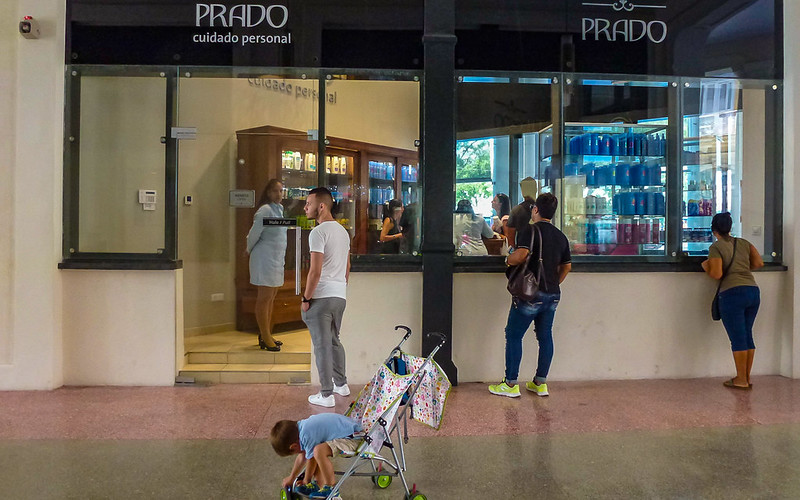
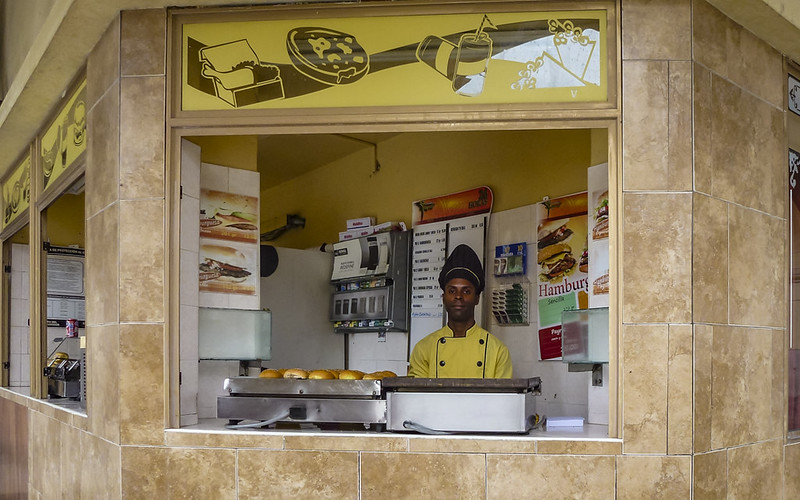

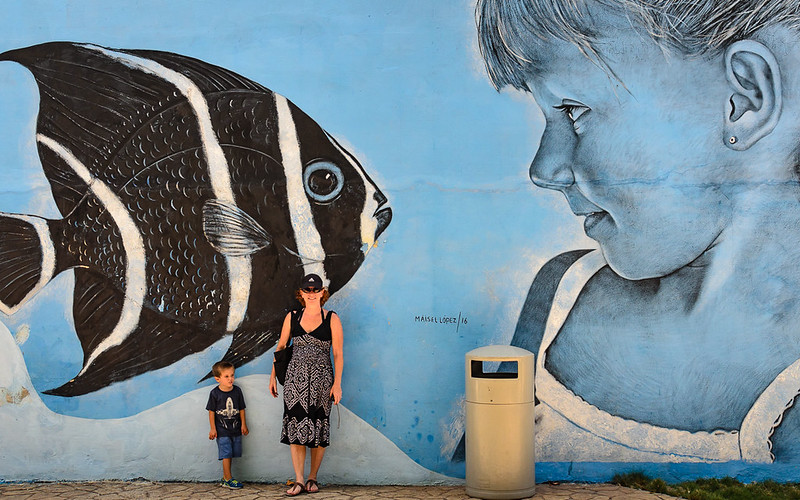
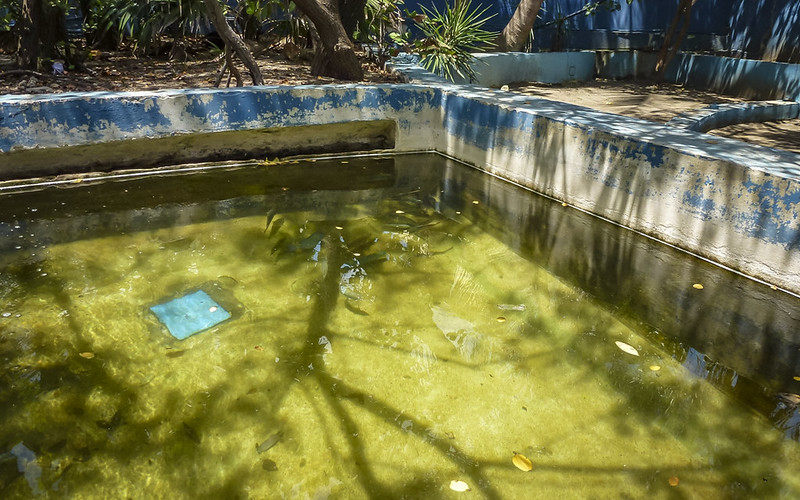
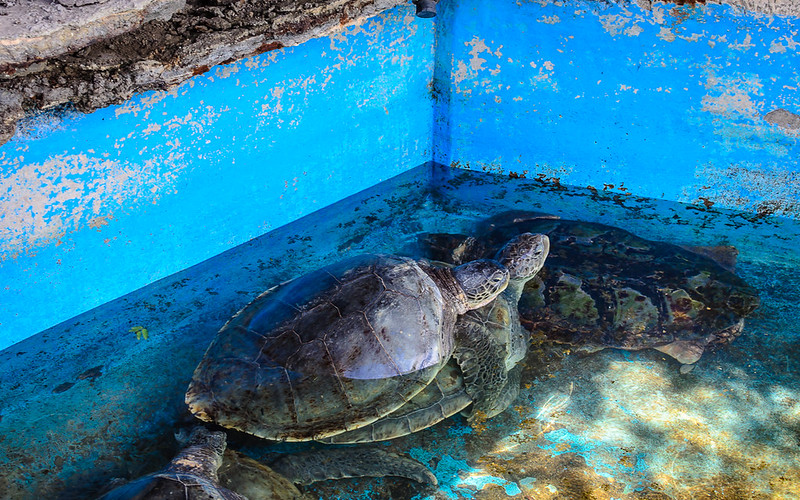

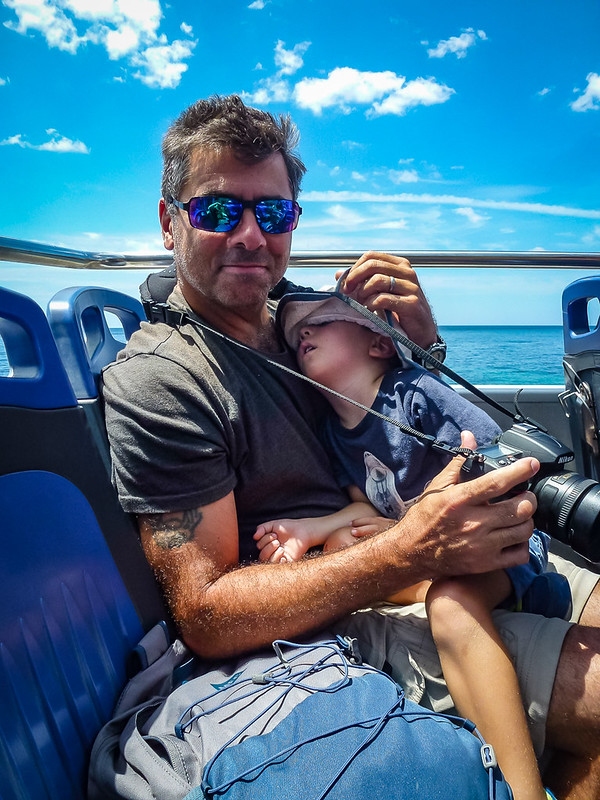
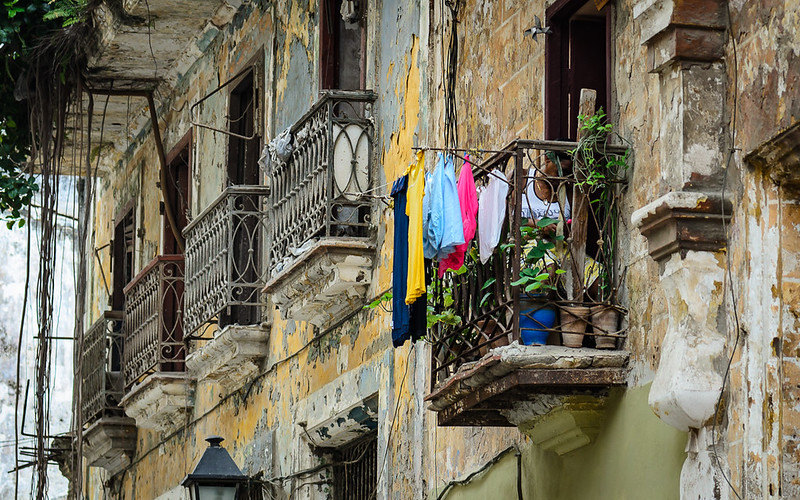





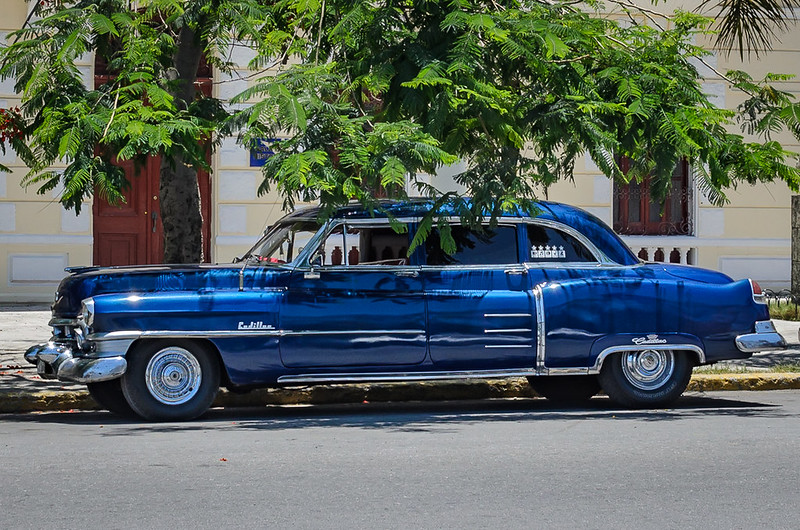
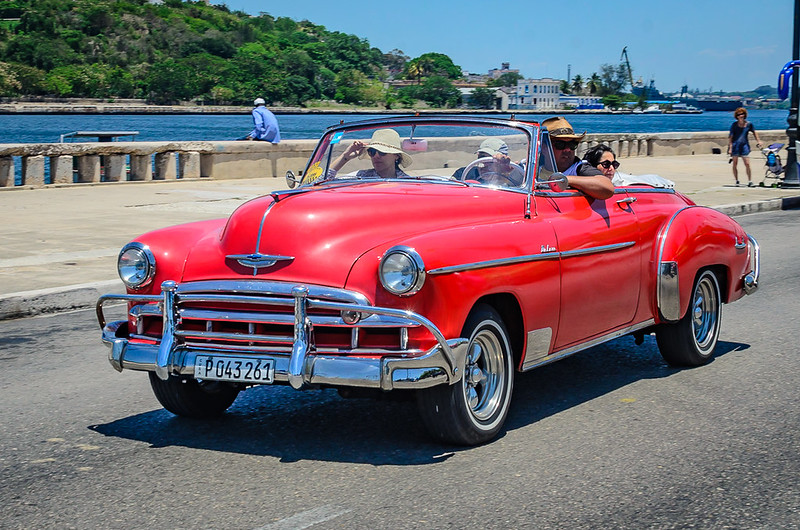












Hola Donna, Okan, Indigo,
I read with great Interest your entries and often check to see where you are and wish was there seeing the sights with you! I visited Cuba in 98,03,04 staying in Havana, Varadero, Cayo Coco in order to explore the surroundings in each area. Canadians have had a relationship with Cuba for years with direct Charter flights from many different cities during the winter season.
https://en.wikipedia.org/wiki/Canada%E2%80
%93Cuba_relations
As a car collector in my previous life I love your photos. We brought black and white film to Havana to capture the cars and city in a different perspective. I also appreciated seeing Cuba through your eyes. Wishing you sunny days and good roads and special Hi to Indigo from Adele